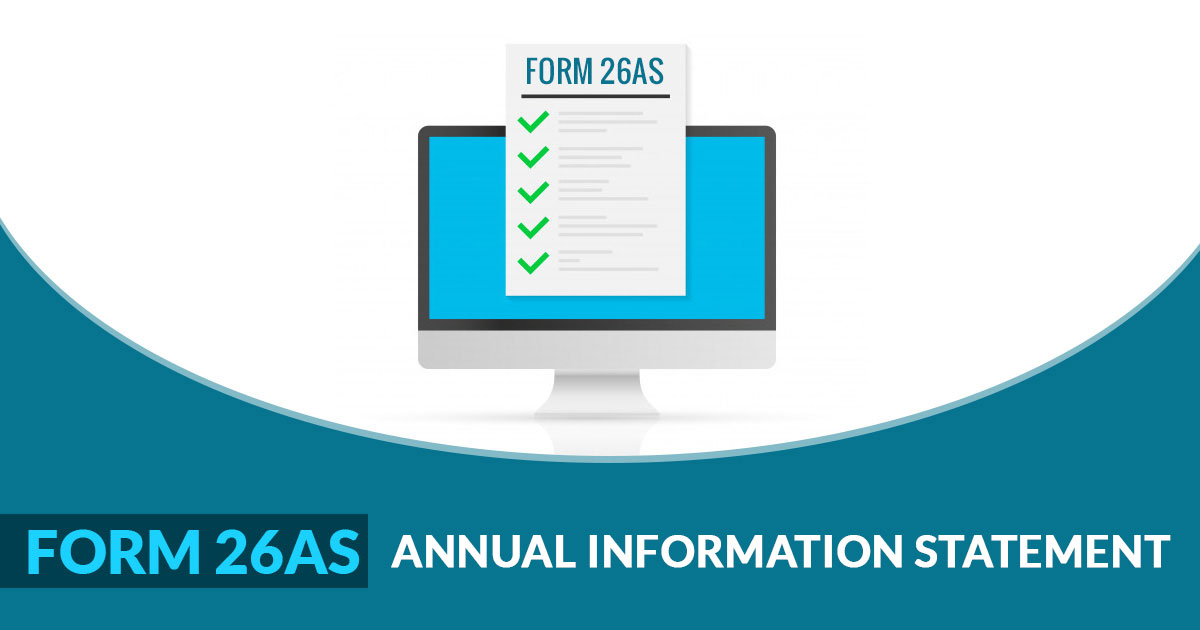
InfoMine
Your Learning Destination

Is Agricultural income really exempt from Tax?
-CA. Vishnu Barman
Introduction
- The Constitution of India vide Article 366(1) defines agricultural income as under:
“agricultural income” means agricultural income as defined for the purposes of the enactments relating to Indian income-tax.
- The Income Tax Act, 1961 (the Act) defines agricultural income under Section 2(1A) as:-
- any income derived from such land by—
- any rent or revenue derived from land which is situated in India and is used for agricultural purposes;
- agriculture; or
- the performance by a cultivator or receiver of rent-in-kind of any process ordinarily employed by a cultivator or receiver of rent-in-kind to render the produce raised or received by him fit to be taken to market; or
- the sale by a cultivator or receiver of rent-in-kind of the produce raised or received by him, in respect of which no process has been performed other than a process of the nature described as above;
- any income derived from any building owned and occupied by the receiver of the rent or revenue of any such land, or occupied by the cultivator or the receiver of rent-in-kind, of any land with respect to which, or the produce of which, any process mentioned in above paragraphs and c. is carried on.
- In accordance with Article 246 of the Constitution read with Entry no. 82 of List I of Seventh Schedule, the Parliament has the exclusive power to levy taxes on income except agricultural income. Agricultural income is a State subject in accordance with Entry no. 46 of List II of Seventh Schedule. Therefore, only States can levy tax on agricultural income and thus the Act, being a Union’s Act, exempts the agricultural income from its purview through Section 10(1) of the Act.
- BUT is agricultural income really exempt from Income-tax?
Analysis
- Each year, the Finance Act defines the rates of Income Tax. The Government has devolved a unique method called “partial integration of agricultural income with non-agricultural income” to levy tax in cases where assessee have both agricultural and non-agricultural incomes. This method works in three steps which are as under:
- Agricultural income shall be clubbed with the other incomes of the assessee and tax shall be calculated on such clubbed income,
- Agricultural income shall be increased with the applicable basic exemption limit and tax shall be calculated on such amount.
- Tax calculated in step (i) shall be reduced by the tax calculated in step (ii) so as to arrive at final tax payable.
- It must be noted that this method applies only if assessee satisfies two conditions that are:
- Assessee must have both agricultural and non-agricultural incomes.
- Agricultural income must exceed `5,000/-.
To understand how this plus minus game impacts the tax liability of an assessee, let us take an example*:
Particulars | Mr. A | Mr. B | Mr. C |
Total income excluding agricultural income | 9,00,000 | 9,00,000 | 10,00,000 |
Agricultural income | Nil | 2,00,000 | 2,00,000 |
Total income for tax calculation purposes | 9,00,000 | 11,00,000 | 12,00,000 |
Income tax excluding cess (considering basic exemption limit of `2,50,000/-) | 92,500 | 1,42,500 | 1,72,500 |
Less: Relief for agricultural income (tax on `2,50,000 + agricultural income) | Nil | 10,000 | 10,000 |
Net tax liability (A) | 92,500 | 1,32,500 | 1,62,500 |
|
|
|
|
Tax liability if no tax is levied on agricultural income (B) | 92,500 | 92,500 | 1,12,500 |
Impact of the method devolved for computing tax in case of agricultural income | Nil | 40,000 | 40,000 |
* Individuals not opting for Section 115BAC – newly introduced slabs.
We can draw the following conclusions from the above illustration:
- Even after the exclusion of agricultural income from the total income of the assessee, there might be situations when the assessee is burdened with additional tax owing to such Agricultural Income.
- When income is being taxed at maximum rate then incremental tax on agricultural income is always the same. In simple words, as evident from above example, Mr. B and Mr. C had the same incremental impact on their income tax liability owing to their Agricultural Income.
- Now the question arises that if such method has increased the amount of tax i.e. indirectly it has taxed the agricultural income, then is this method constitutionally valid?
Section 10(1) of the Act exempts agricultural income from its purview; therefore, the provisions of the Act are clearly in conformity to the Constitution. Then, what about the Finance Act?
Even when the Finance Act of each year includes agricultural income, if any, for the purpose of computing the Income-tax, it is only for the purpose to tax incomes other than agricultural income at higher rates. The formula for this purpose is so developed that it excludes tax on agricultural income only. In the ‘Forty-ninth Report’ of the Law Commission of India on the “Proposal for inclusion of agricultural income in the total income for the purpose of determining the rate of tax under the Income Tax Act, 1961” dated August 28, 1972 , it had been established that inclusion of such agricultural income is only for determining the rate of such tax on income other than agricultural income and is valid in Law and not ultra-vires the Constitution.
- Therefore, in the light of above discussion it can be said that even though the method as explained above does increase the amount of Income-tax payable, it is Constitutionally valid.
Frequently Asked Questions (FAQs)
Is tax payable on gain on sale of agricultural land?
- Land is considered as a capital asset for persons other than those who do business of it and income on transfer of any capital asset is computed under the head “Capital Gains”.
- As per Section 2(14), agricultural land in India is not a Capital Asset. Hence no capital gain shall arise on transfer such land and therefore, no Income-tax is charged on such transfer.
- Agricultural Land in India means any land not being–
S.No. | Situated within | Population limits |
1. | the jurisdiction of a municipality or a cantonment board | not less than ten thousand |
2. | not being more than two kilometres, from the local limits of any municipality or cantonment board | more than ten thousand but not exceeding one lakh |
3. | not being more than six kilometres, from the local limits of any municipality or cantonment board | more than one lakh but not exceeding ten lakhs |
4. | not being more than eight kilometres, from the local limits of any municipality or cantonment board | more than ten lakhs |
- From the above it is clear that as far as capital gain on sale of Agricultural Land in India is concerned, no tax is payable on the same when the land is not situated in regions described above.
What if income is partially from agriculture and partially from business?
- Rule 7 of the Income Tax Rules, 1962 takes due care of a case where Income is partially from agriculture and partially from business.
- In such a case, market value of any agricultural produce which has been raised by the assessee or received by him as rent-in-kind and which has been utilised as a raw material in such business or the sale receipts of which are included in the accounts of the business shall be deducted, and no further deduction shall be made in respect of any expenditure incurred by the assessee as a cultivator or receiver of rent-in-kind.
- What is Market Value?
- where agricultural produce is ordinarily sold in the market in its raw state, or after application to it of any process ordinarily employed by a cultivator or receiver of rent-in-kind to render it fit to be taken to market, the value calculated according to the average price at which it has been so sold during the relevant previous year;
- where agricultural produce is not ordinarily sold in the market in its raw state or after application to it of any process aforesaid, the aggregate of –
- the expenses of cultivation
- the land revenue or rent paid for the area in which it was grown; and
- such amount as the Assessing Officer finds, having regard to all the circumstances in each case, to represent a reasonable profit.
- Special Consideration for Income from Manufacturing Rubber, Coffee and Tea (Seller in India)
- Income from Manufacturing of Rubber – As per Rule 7A of the Income Tax Rules, 1962, 65% of the Income so received by the manufacturer is deemed to be Agricultural Income.
- Income from Manufacturing of Coffee– As per Rule 7B of the Income Tax Rules, 1962,
- 75% of the Income so received by the manufacturer is deemed to be Agricultural Income where coffee is only grown and cured by the seller in India.
- 60% of the Income so received by the manufacturer is deemed to be Agricultural Income where coffee is grown, cured, roasted and grounded by the seller in India, with or without mixing chicory or other flavouring ingredients.
- Income from Manufacturing of Tea – As per Rule 8 of the Income Tax Rules, 1962, 60% of the Income so received by the manufacturer is deemed to be Agricultural Income.
Residual Concepts
- Section 54B: As discussed in aforesaid paragraphs, capital gain on sale of agricultural land in India that is outside the municipal limits already discussed is not chargeable to Tax. However, capital gain from transfer of land used for agricultural purposes when the condition of municipal limits is not satisfied has to be charged to tax. Section 54B deals with exemption of such capital gains when the following conditions are satisfied –
- Land used for agricultural purposes for more than 2 years
- Individual or HUF assessee
- Use by individual himself or his parent(s) or by HUF itself
- Exemption upto the amount of capital gain and only capital gain is to be invested
- Applicable on purchase of Agricultural Land within 2 years from date of transfer
- Lock in period of 3 Years
- Section 10(37): When an agricultural land which is situated in municipal limits as described above and compulsorily acquired (after 1st April 2004) by the Central Government or the Reserve Bank of India, then such income from compensation is exempt u/s 10(37). Such exemption is only available to individuals and HUF and such land was used for agricultural purposes for more than 2 years by individual himself or his parent(s) or by HUF itself.
- Tax Audit u/s 44AB : An agriculturist, who does not have any income under the head "Profits and gains of business or profession" chargeable to tax under the Act and who is not required to file any return under the said Act, need not get his accounts audited for purposes of section 44AB even though his total sales of agricultural products may exceed the prescribed limit. Hence, if the Agriculturist also has any other income under the head "Profits and gains of business or profession" then he shall be required to get his accounts audited for purposes of section 44AB if his gross receipts jointly exceeds the threshold limit.
- Section 40A(3) : As per Rule 6DD(e) of the Income Tax Rules, 1962, the provisions of section 40A(3) are not applicable if cash payment in excess of Rs 10,000/- is made for purchase of agricultural produce from a farmer/cultivator. If the Payment is made to a trader or middleman than this exemption is not applicable.
- Section 269ST : As per provision of section 269ST of the Act, no person shall receive an amount or Rs. 2,00,000 or more from a person
- in aggregate from a person in a day, or
- in respect of single transaction, or
- in respect of transaction relating to one event or occasion from a person.
Since no relaxation has been given to the agriculturist in the said section hence contravention of this section may invite penalty of the same amount to the agriculturist.
- Mandatory filing of return of Income u/s 139 : As per Amendment made by Finance Act, 2019 in Section 139, a person other than a Company or Firm, who is not otherwise required to furnish a return, and who during the previous year—
- has deposited an amount or aggregate of the amounts exceeding one crore rupees in one or more current accounts maintained with a banking company or a co-operative bank; or
- has incurred expenditure of an amount or aggregate of the amounts exceeding two lakh rupees for himself or any other person for travel to a foreign country; or
- has incurred expenditure of an amount or aggregate of the amounts exceeding one lakh rupees towards consumption of electricity,
shall now be compulsorily required to file its return. Hence any farmer who satisfies any of the above conditions will now be required to file his return of Income.
Practical Insights
S. No. | Practical situation | Nature of Income |
1. | Selling of trees grown on a forest land naturally | non-agricultural income |
2. | Rent or revenue derived from Indian land used for agricultural purposes | agricultural income |
3. | Sale of cultivated produce or performance of any basic activity (to make the produce fit for market) | agricultural income |
4. | Rent from Building owned/occupied for sale of cultivated produce or performance of any basic activity (to make the produce fit for market) and situated on the immediate vicinity of such land and either assessed to land revenue or situated outside the specified municipal limits (as mentioned earlier) | agricultural income |
5. | If Agricultural land is given on rent for residential purpose | non-agricultural income |
6. | Any income derived from saplings or seedlings grown in a nursery | agricultural income |
7. | Agricultural activity on Urban Land | agricultural income |
8. | Agricultural activity carried out by Company | agricultural income |
9. | Sale of fruits from the trees planted around a house (residential property) | non-agricultural income |
10. | Export of agricultural produce by a middleman | non-agricultural income |
11. | Subsequent process is undertaken on non-agriculture land/premises to make any agricultural produce marketable | agricultural income |
12. | Income from converting of jaggery (Gur) from sugarcane (proportion of income after eliminating income from sugarcane) | non-agricultural income |
13. | claim received from Insurance company for damage of crop | agricultural income |
14. | Income from Mushroom Farming | agricultural income |
15. | Income from Fish Farming(Jhinga) | non-agricultural income |
16. | Dividend declared by a tea manufacturing company (profits to the extent of 60% deemed Agricultural Income for Company) | non-agricultural income |
17. | Income from Bee Hiving | non-agricultural income |
18. | Income from making of salt from sea water | non-agricultural income |
19. | Interest income on crop loan | non-agricultural income |
20. | Income from dairy farming | non-agricultural income |
21. | Rent received from farm house given for residential purpose or shooting of film | non-agricultural income |
22. | Commission received by broker on sale of crop | non-agricultural income |


